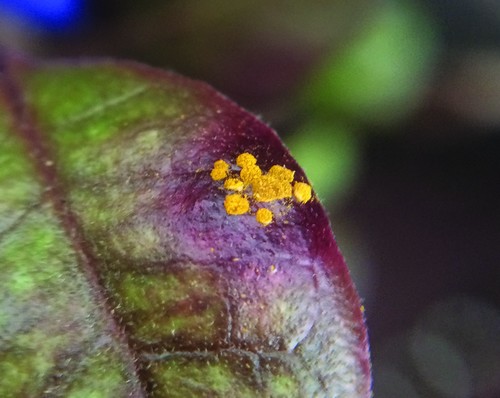Myrtle rust research response
When myrtle rust arrived in New Zealand in 2017 it was all hands on deck for many of the country’s research providers. Scion is part of a multi-disciplinary research team focused on learning what we can about myrtle rust in New Zealand, conserving the susceptible species and developing effective ways to manage it.
Achieving a robust research baseline
Over the year since myrtle rust was discovered, a number of new and diverse research programmes have begun.
Scion is leading a new approach to engagement with Māori and interested groups including horticulturalists, conservation groups, government departments, regional councils and science groups. The focus of bringing these groups together is to create a consistent approach to the long-term monitoring and surveillance of myrtle rust. This will ensure that all groups are using the same measures New Zealand wide, creating a reliable baseline that can be compared against overseas data. Work to develop a system and tools to complete this surveillance and monitoring will take place next year.
The team also has begun collecting seed for exotic and native Myrtaceae around New Zealand and is working closely with mana whenua around the country to obtain seed from taonga species in accordance with local tikanga. The germplasm of these plants is retained by mana whenua and either stored on their behalf or returned to them. Future work will see engagement with iwi and seed collection undertaken across the nation.
Some of this seed is being sent to Australia to test against the same strain of myrtle rust as is present in New Zealand because currently testing cannot be done in New Zealand. Seed is also being sent to South Africa and South America where different strains of myrtle rust are present.
“By sending our seed to our southern hemisphere neighbours, we can compare our material against theirs and gauge how susceptible New Zealand’s myrtles are,” says Research Leader Dr Beccy Ganley.
Back on the home ground, Scion is working with Plant and Food Research and Manaaki Whenua, preparing comprehensive reviews investigating the potential for resistance breeding and control methods suitable for New Zealand conditions.
Scion is also leading a social science theme to the myrtle rust response. By exploring engagement and social licence, we are gaining a new perspective on the response to the initial incursion, and how it might be improved going forward into long-term management or for future incursion responses.
Dr Rebecca Martin, Ministry for Primary Industries Myrtle Rust Research Programme Coordinator, and Senior Adviser, Conservation, says: “Scion’s highly collaborative and multi-disciplinary research programme is integral to New Zealand’s understanding of both the impacts of myrtle rust over the long-term here, but also how we manage and deal with those impacts. This essential research programme, along with the inter-linked themes led by Plant and Food Research, will help deliver improved management tools and greater understanding for myrtle rust’s behaviour and impacts here, and will help to enable all New Zealander’s to protect their taonga and iconic myrtle plants, and their associated species and ecosystems.”
These projects are an important beginning in what promises to be a hard fought battle for New Zealand’s beloved Myrtaceae plants.
Collaborators: Plant and Food Research, Manaaki Whenua, Will Allen Associates, Biosecurity Research Ltd, AgResearch, Massey University, AsureQuality
Investment: Ministry for Primary Industries, Ministry of Business, Innovation and Employment

